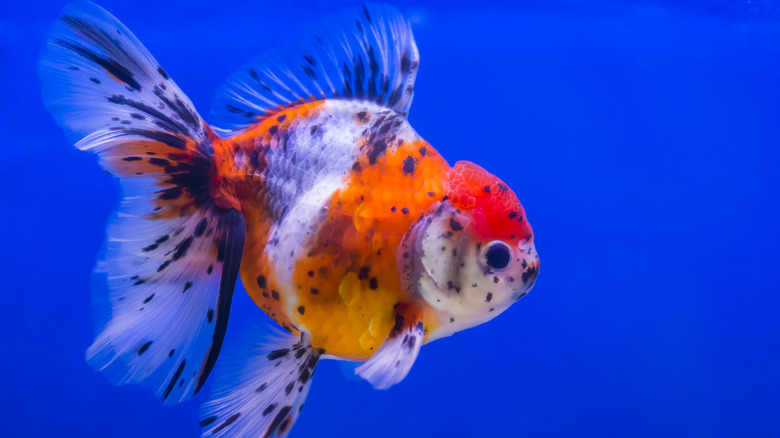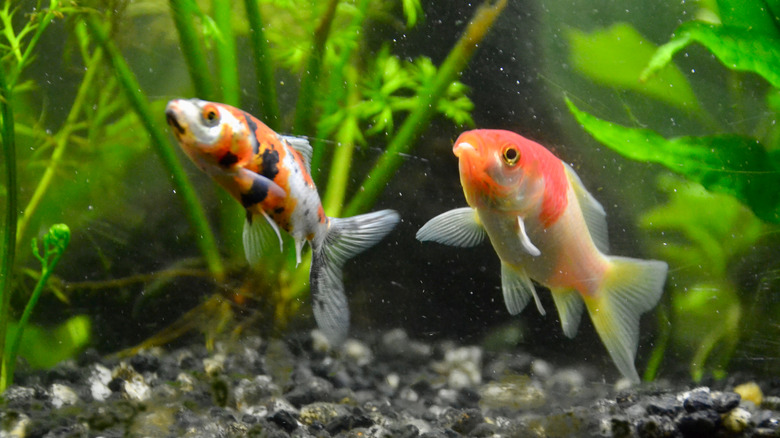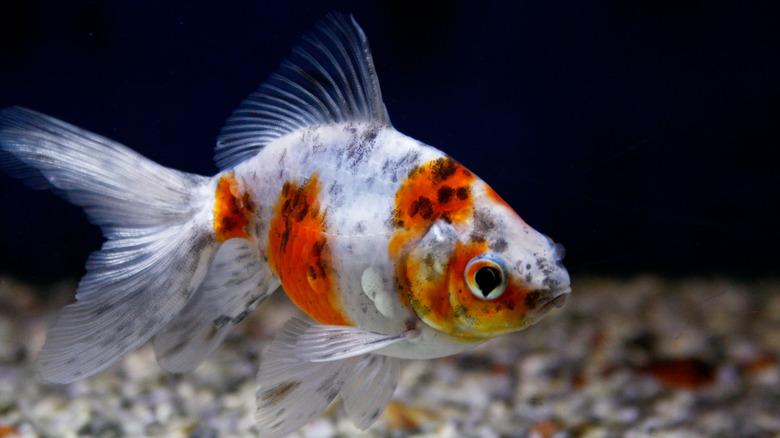What Are The Causes Of Brown Skin Spots On Goldfish?
We may receive a commission on purchases made from links.
It can be unnerving when you wake up one morning and your goldfish is no longer a bright orangey yellow color. You may already be familiar with white spot disease, also called freshwater ich, a parasite that causes light spots on the fins and skin. Ich is extremely contagious and dangerous for your little buddies. It has up to a 100 percent mortality rate if left untreated. But what about brown spots?
Brown spots in goldfish are a different story. Similar to white spots, some common culprits are parasites, including fish lice. These little green-brown bugs attach to a goldfish's skin and can appear to the naked eye as little brownish specks on their fins. Velvet disease, or gold dust disease is another parasitic infection that can cause your fish to look like it's dusted in a brownish gold powder. In some cases, though the specks may not be the result of a disease, but rather, an issue with the aquarium water. Elevated ammonia levels can cause your goldfish develop chemical burns on their fins.This often happens inside new aquariums, tanks with tap water that is too chlorinated, transport bags, or in tanks where there are too many fish. Luckily, there are treatments for all three issues that may be causing your goldfish to have brown spots.
Ammonia burns can cause dark spots in goldfish
If you suspect your goldfish's spots are the result of ammonia burns, you'll want to verify your tank water chemical levels to confirm if it's true. You can buy ammonia testing kits that will tell you the extent of the problem. Typically, the process involves dipping a test strip into the water, which will change to a specific color that determines whether the chemical levels are safe. If the color matches with a level outside of the safe zone on the instructions, you will want to act quickly. Ammonia burns can lead to very serious and potentially fatal bacterial infections that require antibiotics.
Place only the fish with ammonia burns in a separate quarantine tank and treat them there with appropriate medication while you adjust the tank water. You don't want to unnecessarily treat the other fish in their aquarium because it could kill off beneficial biofilter bacteria that keeps the water balanced and healthy. If your goldfish doesn't develop an infection from their ammonia burn, they'll usually recover in about a week's time, assuming the tank water has been treated. You can prevent future ammonia burns by testing your aquarium's water regularly.
Parasites and fish lice
Obviously, parasitic infections are never a great sign in your pet fish. Both fish lice and velvet disease are dangerous and potentially fatal if left untreated. They're also extremely contagious to other marine life, so it's essential to act quickly if that's what's causing their brown spots. You can purchase medications for fish lice without having to go through a vet's office. Microbe-LIFT Lice and Anchor Worm For Saltwater and Freshwater Aquariums can be applied to the tank once for three consecutive weeks to eradicate a fish lice infestation.
Meanwhile, one of the more effective treatments for velvet disease is medication that includes copper, such as a Copper Power Blue Treatment. For best results, experts say the treatment has to be comprehensive. According to Natalie Steckler and Roy E. Young at the School of Forest, Fisheries, and Geomatics Sciences at the University of Florida's IFAS Extension, "Treatment should target all life stages, including eggs, juveniles, and adults, both on the fish and in the environment. Adult parasites can be manually removed from the affected fish, but this is impractical in many situations and is an incomplete solution because eggs, unattached juveniles, and adults will still be present in the environment." Keep in mind that when used incorrectly, copper can become dangerous to your fish, so be sure to consult an aquatic vet to confirm the correct dosage.
Depending on the specific medication, it could take several days to eradicate the parasite and for the spots to vanish from your goldfish. To ensure these microbes aren't spreading to others in the aquarium, be sure to quarantine the affected fish in a separate tank. Needless to say, treating parasites is a pain, but doable with the right materials if addressed in a timely manner.


